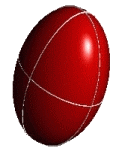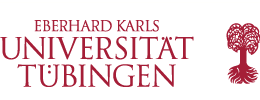[Uni Tübingen] - [Mat.-Nat. Fakultät] - [Fachbereich Chemie] - [Anorg. Chemie] - [Klaus Eichele] - [NMR Ramblings] - Practical Aspects

|
Practical Aspects of Solid State NMR |
Some time ago, we wrote the following paper:
D. L. Bryce, G. M. Bernard, M. Gee, M. D. Lumsden, K. Eichele, R. E. Wasylishen:
Practical Aspects of Modern Routine Solid-State Multinuclear Magnetic Resonance Spectroscopy: One-Dimensional Experiments.
Can. J. Anal. Sci. Spectrosc. 2001, 46, 46-82.
Unfortunately, this is a journal that is not circulated widely. Therefore I have produced the following PDF file in order to increase the availability of this useful introduction. For that purpose, I have used the accepted manuscript in Corel WordPerfect format, converted the manuscript to LaTex using Jaroslav Fojtik's wp2latex program to get the main body of the text, and made all the modifications to bring it into the current shape. The figures were converted from Corel Presentations format to EPS using Micrografx Designer. LaTex in the MikTex distribution (with TeXnicCenter) was used to produce a postscript file that got converted to PDF with Adobe Acrobat Distiller. This was my first major project using LaTex, and I am actually quite pleased with the result (thanks to Donald Arseneau for helping me with the endnotes).
Here, you can download the resulting PDF file (0.9 MB, hyperlinked version: October 13, 2005).
If you are not sure whether you are interested, here is the table of contents:
1 Introduction and Overview
2 A Brief Review of Pulsed Fourier Transform NMR
2.1 Basic Components of NMR Spectrometers Designed to Investigate Solids
2.1.1 High-Power Amplifiers
2.1.2 High-Speed Digitizer
2.1.3 Magic-Angle Spinning (MAS) Hardware and Equipment
2.1.4 High-Power Probes
2.2 Data Acquisition and Processing Free-Induction Decays
3 Spin-1/2 Nuclei
3.1 Stationary Samples
3.1.1 Powder Samples
3.1.2 Single Crystals
3.2 High-Resolution CP/MAS NMR Spectroscopy
3.2.1 Cross-Polarization: Transferring Magnetization
3.2.2 Magic-Angle Spinning and CP
3.2.3 High-Power Abundant Spin Decoupling
3.2.4 Spectral Editing and Assigning Spectra
3.3 Some General Considerations: Shimming, Setting the Magic Angle,
Referencing, Air Sensitive Samples and Temperature Effects
3.4 Line Narrowing: Dealing with Abundant Spins (1H and 19F)
4 Non-Integer Quadrupolar Nuclei
4.1 The Quadrupolar Interaction
4.2 Setting the Pulse Width
4.3 CP to Quadrupolar Nuclei
4.4 Stationary Samples
4.4.1 Broad-Line Experiments
4.4.2 Quadrupolar Echo Experiments
4.5 MAS Powdered Samples
4.6 Single-Crystal Studies
5 Deuterium NMR: A Powerful Technique for Probing Molecular Dynamics
5.1 Experimental Considerations
5.2 Deuterium NMR Spectra
5.3 H-2 NMR Relaxation Times and Molecular Dynamics
6 Synopsis
7 Acknowledgements
8 References
[ Anorg. Chemie ] | [ Go Home ] | webm@ster | last modified: 20.03.2020

